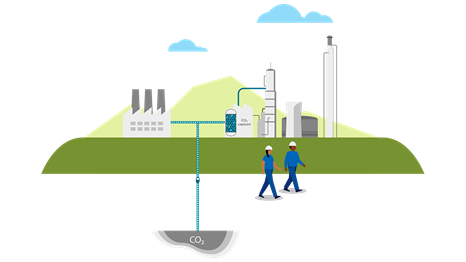our operations
pipeline aerial patrol reaches new heights
3 min read | may 06, 2024
The AiRanger has been cleared for use in pipeline surveillance.
A new type of drone is taking to the skies on an important mission: inspecting oil and gas pipelines. Working together, Chevron and American Aerospace Technologies, Inc. (AATI) recently made history as the first companies permitted by the Federal Aviation Administration (FAA) to use uncrewed aircraft systems (UASs) in airspace shared by crewed aircraft. Chevron will use UASs to remotely monitor its vast network of pipelines.
The new aircraft from AATI, called an AiRanger, can cover more ground than crewed aircraft and detect potential problems more safely and efficiently.
roy martinez
project manager
more on that
Typically, aerial monitoring is done by an aircraft piloted by one person while another looks out the window to determine if there are any hazards or threats that need to be addressed. These planes move at more than 100 miles per hour.
While these techniques have their place, they also come with challenges. Namely, a reliance on human operators who are prone to things like fatigue and subjective evaluations. This option is better suited to shorter distances and time periods.
the difference
For longer flights, the AiRanger can fit the bill. While a UAS is a drone, it’s larger than the small quadcopter drone you may be used to seeing. And with a wingspan just over 18 feet, it’s also not quite as big as a full-sized plane.
In fact, the AiRanger flies farther and for more hours than either, while providing real-time reports on any potential threats to the pipeline.
Here’s a look at some of the differences between the three types of aircraft; listing their weight, power source or gas usage, and average flight times.

drones
battery pack
35 minutes

UAS
8 gallons aviation fuel
12 hours

human-piloted planes
90 gallons aviation fuel
under 5 hours
With less fuel used to fly longer distances and more hours, the UAS has the added benefit of being a lower carbon emitting tool than a human-piloted aircraft.
how it works
The AiRanger is designed and operated by AATI. Flights are typically preplanned and automated, but monitored by humans.
The craft is also equipped with artificial intelligence (AI).

Andrew Giordano, pilot in command for AATI, monitors an AiRanger flight.
If they receive notification of potential issues, the controller can have the aircraft take another pass before deciding what action to take, such as deploying a team to remove the threat or dismissing the warning.
This is where machine learning and AI combine to continuously improve the AiRanger’s performance. The UAS uses machine learning to discover patterns in the data it collects. These patterns are run through modeling that helps the AiRanger get better at “seeing” them. AI is the model’s ability to determine the right action to take at the right time. This combination makes the AiRanger increasingly more effective at detecting potential problems.
The AiRanger can also sense other aircraft. If it does, the human pilot in command can take control and perform evasive maneuvers to avoid collisions.
use cases
In California’s San Joaquin Valley, Chevron plans to use the AiRanger to monitor pipelines and other assets within an approximately 4,300-square-mile area. The ability to cover more ground with greater accuracy for longer periods of time means better real-time surveillance of the area’s lines and facilities.

The AiRanger can provide services beyond pipeline monitoring for the community.
While the initial plan is to use the UAS for pipeline and facility monitoring, it could have broader applications within the community, such as emergency response to natural disasters or for things like spills, leak detection or ecological surveys.
“The AiRanger is a new type of platform due to its large scale and the range of operations it enables,” said David Yoel, CEO of AATI. “Its intelligent sensors and real-time communications deliver actional data at a scale that was previously unimaginable.”
david yoel
CEO of american aerospace technologies, inc.
why it matters
Monitoring pipelines helps keep the community and those working around the pipes safe. A UAS can help detect when there is something happening near a pipeline that needs to be addressed—for instance, someone digging or blocking access.

AATI team members Hovig Yaralian, flight operations manager, and Brennan Scheffler, flight test engineer, tow the UAS to the launch site.
“A UAS can give us an accurate, documented view of our pipeline,” said Roy Martinez, project manager for the UAS initiative and digital advisor for operations in Chevron’s Pipeline and Power business unit. “It allows us to gather data on hazard identification along the path of the pipeline and provide the FAA and industry with more information on what it’s like to employ this technology.”
topics covered
related content
-
 chevron CEO talks AI, energy transition
chevron CEO talks AI, energy transitionalternative fuelsmay 13, 2024
-
 role of natural gas in energy transition highlighted
role of natural gas in energy transition highlightedour operationsmay 10, 2024
-
 polymers could have big potential in Kuwait
polymers could have big potential in Kuwaitour operationsmay 08, 2024
-
 explainer: what do we mean by hard-to-abate industries?
explainer: what do we mean by hard-to-abate industries?emissions solutionsmay 03, 2024
chevron email updates
Subscribe to our newsletter to receive news and updates.




